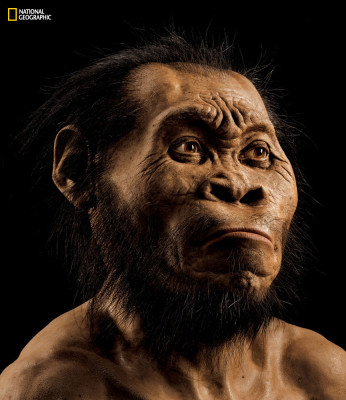 Photo: http://press.nationalgeographic.com
Photo: http://press.nationalgeographic.com
On Thursday, a major announcement on the subject of the human race was announced by the University of the Witwatersrand (Wits University), , the National Geographic Society and the South African Department of Science and Technology/National Research Foundation (DST/NRF). A new species of human relative was discovered.
Besides shedding light on the origins and diversity of our genus, the new species, Homo naledi, appears to have intentionally deposited bodies of its dead in a remote cave chamber, a behaviour previously thought limited to humans.
The finds are described in two papers published in the scientific journal eLife and reported in the cover story of the October issue of National Geographic magazine (http://natgeo.org/naledi) and a NOVA/National Geographic Special (#NalediFossils). An international team of scientists took part in the research.
Consisting of more than 1,550 numbered fossil elements, the discovery is the single largest fossil hominin find yet made on the continent of Africa. The initial discovery was made in 2013 in a cave known as Rising Star in the Cradle of Humankind World Heritage Site, some 50 kilometers (30 miles) northwest of Johannesburg, South Africa, by Wits University scientists and volunteer cavers. The fossils, which have yet to be dated, lay in a chamber about 90 meters (some 100 yards) from the cave entrance, accessible only through a chute so narrow that a special team of very slender individuals was needed to retrieve them.
So far, the team has recovered parts of at least 15 individuals of the same species, a small fraction of the fossils believed to remain in the chamber. “With almost every bone in the body represented multiple times, Homo naledi is already practically the best-known fossil member of our lineage,” said Lee Berger, research professor in the Evolutionary Studies Institute at the University of the Witwatersrand and a National Geographic Explorer-in-Residence, who led the two expeditions that discovered and recovered the fossils.
“This is a tremendously significant find,” said Terry Garcia, the National Geographic Society’s chief science and exploration officer. “That is why, when National Geographic received a call from Lee Berger reporting the fossils’ initial discovery, we immediately committed our support to this remarkable effort.”
H. naledi was named after the Rising Star cave — “naledi” means “star” in Sesotho, a local South African language. “Overall, Homo naledi looks like one of the most primitive members of our genus, but it also has some surprisingly human-like features, enough to warrant placing it in the genus Homo,” said John Hawks of the University of Wisconsin-Madison, U.S., a senior author on the paper describing the new species. “H. naledi had a tiny brain, about the size of an average orange (about 500 cubic centimeters), perched atop a very slender body.” The research shows that on average H. naledi stood approximately 1.5 meters (about 5 feet) tall and weighed about 45 kilograms (almost 100 pounds).
H. naledi’s teeth are described as similar to those of the earliest-known members of our genus, such as Homo habilis, as are most features of the skull. The shoulders, however, are more similar to those of apes. “The hands suggest tool-using capabilities,” said Dr Tracy Kivell of the University of Kent, U.K., who was part of the team that studied this aspect of H. naledi’s anatomy. “Surprisingly, H. naledi has extremely curved fingers, more curved than almost any other species of early hominin, which clearly demonstrates climbing capabilities.”
This contrasts with the feet of H. naledi, which are “virtually indistinguishable from those of modern humans,” said Dr William Harcourt-Smith of Lehman College, City University of New York, and the American Museum of Natural History, who led the study of H. naledi’s feet. Its feet, combined with its long legs, suggest that the species was well-suited for long-distance walking. “The combination of anatomical features in H. naledi distinguishes it from any previously known species,” added Berger.














